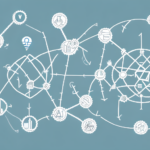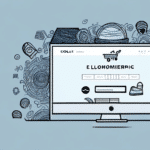The Importance of Securing Customer Data
In the digital era, securing customer data is paramount for businesses. With the increasing frequency of cyberattacks and data breaches, protecting sensitive information is crucial for maintaining customer trust and avoiding significant legal and financial repercussions.
Building Customer Trust
Customers entrust businesses with their personal information during transactions and account creations. A data breach can lead to financial loss, identity theft, and other adverse effects, eroding customer trust and loyalty. According to the IBM Cost of a Data Breach Report 2023, the average cost of a data breach was $4.45 million, highlighting the financial stakes involved.
Competitive Advantage
Businesses that prioritize data security can differentiate themselves in the market. With customers becoming more aware of data privacy issues, companies with robust security measures are more likely to attract and retain customers. Secure data practices also provide valuable insights for enhancing products, services, and personalized marketing efforts.
Legal and Financial Consequences
Failure to secure customer data can lead to severe legal actions and hefty fines. Regulations like the General Data Protection Regulation (GDPR) and the California Consumer Privacy Act (CCPA) impose stringent requirements on businesses to protect personal data. Non-compliance can result in fines up to €20 million or 4% of annual global turnover for GDPR violations.
Understanding the Risks of Data Breaches
Data breaches occur when unauthorized individuals access a system and steal sensitive information. These breaches can have devastating impacts on both businesses and their customers.
Financial and Reputational Damage
Data breaches can cost businesses millions of dollars. In addition to direct financial losses, companies may face reputational damage, leading to a decline in customer trust and loss of business opportunities. The Verizon Data Breach Investigations Report 2023 indicates that 80% of breaches involved human error, emphasizing the need for comprehensive security strategies.
Types of Sensitive Information to Protect
- Personal Identification Information (PII): Includes Social Security numbers, addresses, and phone numbers.
- Financial Information: Encompasses credit card numbers and bank account details.
- Healthcare Information: Contains medical records and health insurance information.
- Intellectual Property: Covers trade secrets, patents, copyrights, and trademarks.
Compliance Regulations and Standards
Adhering to compliance regulations is essential for protecting customer data and avoiding legal repercussions.
General Data Protection Regulation (GDPR)
GDPR is a comprehensive data protection law in the European Union that mandates strict guidelines for data handling and privacy. It grants individuals significant rights over their personal data and imposes heavy fines for non-compliance.
California Consumer Privacy Act (CCPA)
CCPA enhances privacy rights and consumer protection for residents of California. It requires businesses to disclose data collection practices and provides consumers with the right to opt-out of the sale of their personal information.
Other Key Regulations
- Health Insurance Portability and Accountability Act (HIPAA): Protects patient health information.
- Payment Card Industry Data Security Standard (PCI DSS): Sets security standards for organizations that handle credit card transactions.
Failure to comply with these regulations can result in fines ranging from thousands to millions of dollars, depending on the severity and nature of the violation.
Best Practices for Securing Customer Data
Implementing best practices is crucial for safeguarding customer data against potential threats.
Creating a Strong Password Policy
- Password Requirements: Enforce the use of complex, unique passwords with a minimum of ten characters, including uppercase and lowercase letters, numbers, and symbols.
- Role-Based Access Control: Limit access to sensitive data based on employee roles to minimize exposure.
- Multi-Factor Authentication (MFA): Enhance security by requiring additional verification steps beyond just passwords.
Implementing Multi-Factor Authentication (MFA)
MFA adds an extra layer of security by requiring users to provide additional authentication factors, such as a code sent to their phone or a fingerprint scan. This significantly reduces the risk of unauthorized access even if passwords are compromised.
However, it's essential to implement MFA thoughtfully to balance security and user convenience. Some users may find MFA cumbersome, so clear communication and user-friendly solutions are vital for effective adoption.
Utilizing Encryption
Encryption ensures that data remains unreadable to unauthorized users. Implementing encryption both in transit and at rest is critical for maintaining data privacy.
- Encryption in Transit: Protects data during transfer via secure protocols like TLS.
- Encryption at Rest: Safeguards stored data on servers and hard drives using strong algorithms like AES-256.
Proper key management and regular rotation of encryption keys are essential to maintain the effectiveness of encryption practices.
Regular Security Audits and Risk Assessments
Conducting regular security audits and risk assessments helps identify and address vulnerabilities within systems. These assessments should be ongoing processes to adapt to evolving threats and technological advancements.
- Identify weak points in the system.
- Assess the effectiveness of current security measures.
- Implement corrective actions to mitigate identified risks.
Additionally, ensuring that third-party vendors comply with security standards is vital to prevent indirect vulnerabilities.
Employee Training on Cybersecurity Best Practices
Employees play a critical role in maintaining data security. Regular training programs should educate employees on recognizing phishing attempts, handling sensitive information, and following secure data practices.
- Identify and report suspicious activities.
- Use secure passwords and manage them effectively.
- Follow company guidelines for data handling and storage.
Incident Response Planning
Despite preventive measures, data breaches can still occur. Having an incident response plan ensures that businesses can respond swiftly and effectively to minimize the impact of a breach.
- Containment: Isolate affected systems to prevent further damage.
- Communication: Inform customers and stakeholders about the breach transparently.
- Evaluation: Assess the breach's impact and implement measures to prevent future occurrences.
Managing Third-Party Vendors and Outsourcing
Outsourcing data management can offer cost savings and efficiency but also introduces additional security risks.
Risks and Benefits of Outsourcing Data Management
While outsourcing can enhance operational efficiency, it may expose sensitive data to third parties, increasing the risk of data breaches if vendors lack robust security measures.
Ensuring Vendor Compliance and Accountability
Businesses must rigorously vet third-party vendors to ensure they comply with relevant security standards and regulations. Regular audits and requiring vendors to adhere to strict security protocols are essential for maintaining data protection.
Securing Cloud Computing and Mobile Devices
Best Practices for Cloud Security
- Use strong, unique passwords and enable MFA for cloud accounts.
- Implement encryption for data stored and transmitted in the cloud.
- Regularly review and update access permissions.
- Monitor cloud services for unusual activities.
Best Practices for Securing Mobile Devices
- Enforce strong password policies and biometric authentication.
- Enable remote wipe capabilities to protect data on lost or stolen devices.
- Avoid using public Wi-Fi for accessing sensitive information.
- Install and regularly update anti-malware software.
Continuous Improvement and Emerging Trends
Regular Software Updates and Patch Management
Keeping software and systems up-to-date is critical for addressing vulnerabilities and preventing exploits. Implementing automated patch management systems can ensure timely updates and reduce the risk of security breaches.
Staying Alert to Phishing and Social Engineering
Phishing and social engineering attacks continue to evolve, targeting employees and customers alike. Businesses must stay vigilant by implementing advanced email filters, educating employees on identifying such threats, and employing anti-malware solutions to mitigate risks.
Conclusion: Protecting Customer Data is an Ongoing Commitment
Securing customer data is an essential, continuous process that involves implementing robust security measures, adhering to compliance regulations, and fostering a culture of security awareness. By adopting best practices such as strong password policies, encryption, regular security audits, and comprehensive employee training, businesses can safeguard sensitive information, maintain customer trust, and protect themselves from the ever-evolving landscape of cyber threats.




















